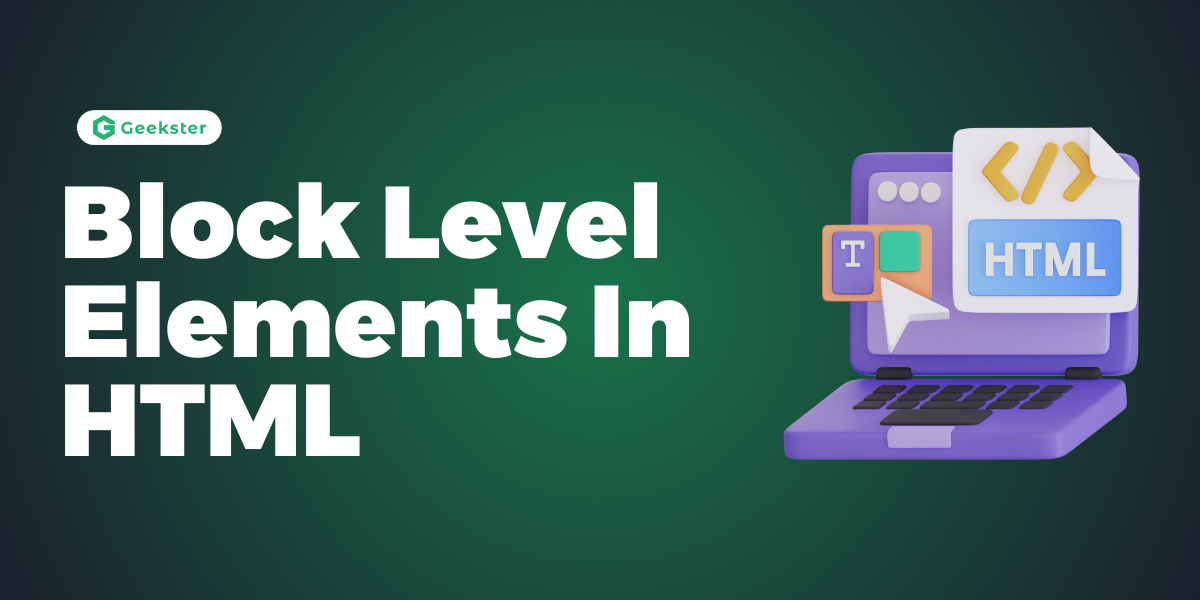Introduction
Block level elements in HTML are elements that start on a new line and occupy the full available width of their parent container. These elements create large blocks of content and can contain other block-level or inline elements. These elements are fundamental in structuring the overall layout of a web page. Examples include <div>, <p>, <h1> through <h6>, <ul>, and <ol>.
Characteristics of Block-Level Elements
- New Line Start: A block-level element always starts on a new line.
- Full-Width: By default a block-level element will fill the full width of its container.
- Contain Other Elements: It can contain other block-level or inline elements.
- Height and Width: These elements respect height and width properties defined in CSS.
Using Block-Level Effectively
- Semantic Structure: Use them semantically to improve the readability and maintainability of your code. For example, use for the header section, for the footer, and for self-contained content.
- Consistent Layout: A grouping of related content within it enhances the application of CSS styles and, therefore, maintains a consistent layout of the page.
- Responsive Design: Use CSS Flexbox or Grid layouts within it to create responsive designs. Your content will be accessible and appealing across various screen sizes.
- Accessibility: Properly structured can enhance accessibility. For instance, using headings (
<h1>to<h6>) appropriately helps screen readers navigate through the content more efficiently. - Readability: Group content with them into manageable sections. This way, you will increase the readability of your page and make it more easily digestible by users.
- Styling and Spacing: Use CSS to control the spacing around them. Proper use of margins, padding, and borders can create a clean and organized layout.
- Performance: Have as few unnecessary of them as possible to avoid bloating the HTML structure. A clean and concise markup is ideal and might even improve the performance of your webpage.
Common Block-Level Elements
1.<div> : The most frequently used block-level element, is an all-purpose container for content. It has no specific semantics other than to create a grouping of elements.
<div>
<p>This is a paragraph inside a div.</p>
</div>2. <p>: Defines a paragraph. Each tag creates a new block of text with space above and below the tex
<p>This is a paragraph.</p>3. <h1> to <h6> : Heading elements go from <h1>(most important) to <h6>(least important) .
<h1>This is a heading 1</h1>
<h2>This is a heading 2</h2>
<h3>This is a heading 3</h3>
<h4>This is a heading 4</h4>
<h5>This is a heading 5</h5>
<h6>This is a heading 6</h6>4. <ul> and <ol>: Unordered (bulleted) and ordered (numbered) lists, respectively.
<ul>
<li>List item 1</li>
<li>List item 2</li>
</ul>Conclusion
They form the most important parts of an HTML document as they structure the web page layout by separating the distinct blocks of content. Mastering them is a must for all who want to construct powerful, well-organized web pages. Whether you group the content within <div>, place headings using <h1> to <h6>, or list items using <ul> and <ol>, knowledge in it will increase your capacity within the realm of web development.
Frequently Asked Questions
They are mostly used for structuring the layout of a web page by enclosing parts of the content in a box, which begins on a new line and goes across the full width of the container.
They start on a new line and take up the full available width. Inline elements do not start on a new line and only take up the width they need.
Yes, they may contain other elements as well as inline elements.

